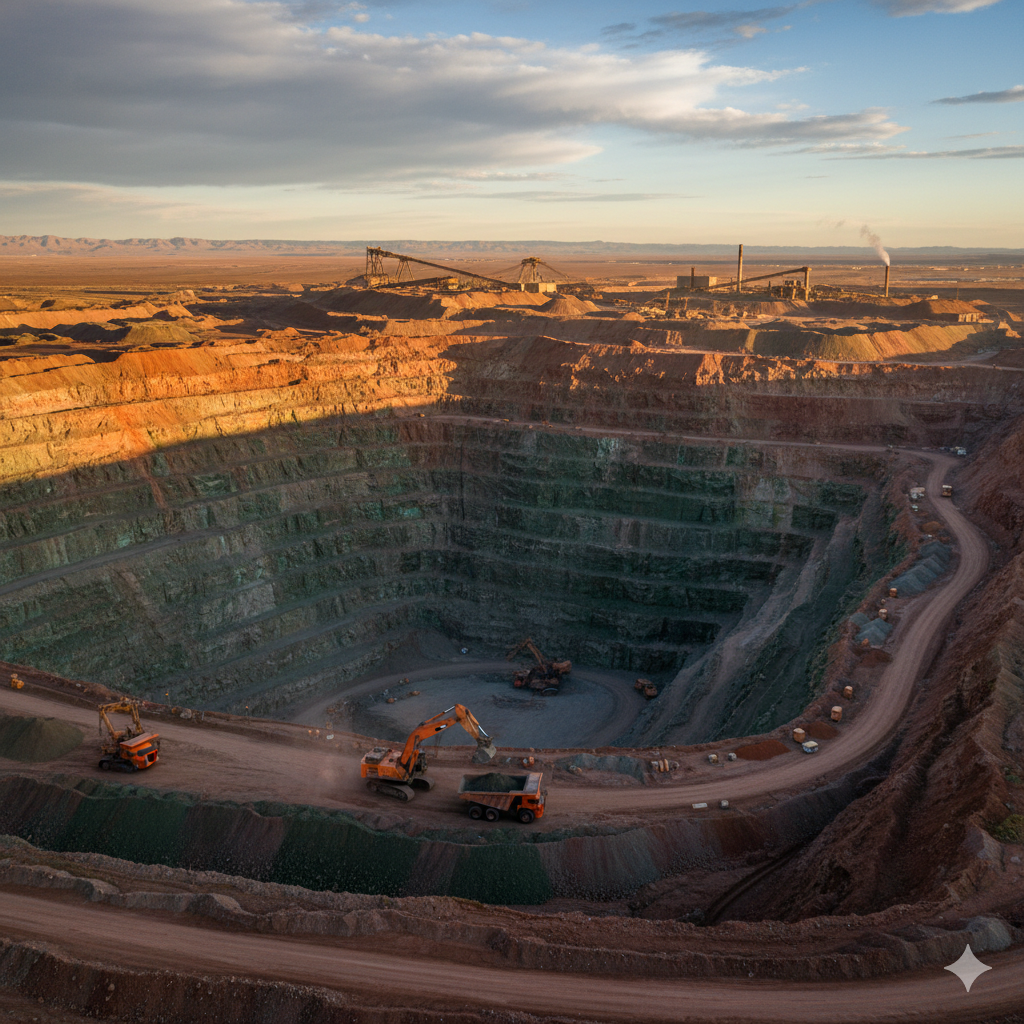Copper mining is the process of extracting copper ore from the earth and refining it into pure metal used in countless industries. It involves both surface and underground mining methods, followed by complex processing techniques to obtain copper concentrates and ultimately produce nearly pure copper cathodes. This metal is essential due to its excellent conductivity and wide application in electrical infrastructure, renewable energy, and manufacturing.
Mining operations can vary widely, from large open-pit mines like Copper Mountain in British Columbia to underground projects. Copper is often recovered alongside other metals such as gold and silver, making mining a multi-faceted industry. The global demand for copper continues to rise, driven especially by the green energy transition, which relies heavily on copper’s unique properties.
Overview Of Copper Mining
Copper mining involves extracting copper from various ore types found in specific geographic regions. The scale and methods of extraction vary based on ore characteristics and regional production capacity. Global trends reflect shifts in demand driven by industrial and technological growth.
Copper Ore Types
Copper primarily occurs in two ore types: sulfide and oxide ores. Sulfide ores, such as chalcopyrite, are the most abundant and typically require complex processing including smelting and flotation. These ores yield higher copper concentrations.
Oxide ores contain copper in forms like malachite or azurite. They are often processed using hydrometallurgical methods such as leaching, which is less energy-intensive than smelting. Oxide ores generally have lower copper grades and are found nearer to the surface.
Mining operations select extraction methods based on ore type, depth, and volume. Often, open-pit mining suits oxide ores and shallow sulfide deposits, while deeper sulfide ores call for underground mining techniques.
Major Copper Mining Regions
The largest copper-producing countries are Chile, the United States, and Australia. Chile leads, accounting for about 25% of the world’s total copper output. Its massive open-pit mines, such as Escondida, are critical to global supply.
The United States’ copper production is concentrated in states like Arizona, Nevada, and Utah, involving both open-pit and underground mining. Australia hosts sizeable deposits, with mines like Olympic Dam combining copper extraction with uranium recovery.
Canada is an important producer with nearly half of its 2023 output coming from British Columbia. South American countries beyond Chile, including Peru and Argentina, also maintain significant copper mining operations.
Global Copper Production Trends
Global copper production exceeds 20 million metric tons annually. Production growth aligns with increasing demand, especially driven by renewable energy, electric vehicles, and infrastructure development.
Recent trends emphasize automation and energy efficiency in mining processes. The shift toward cleaner energy sources is projected to sustain high copper demand through 2030 and beyond.
Production is also affected by geopolitical factors, environmental regulations, and technological innovations aimed at reducing emissions and optimizing ore recovery. Mining companies continue to invest in exploration to secure future copper supplies.
Copper Extraction And Processing
Copper extraction involves a sequence of technical steps to recover copper from mineral ores. The process requires specific mining techniques to access ore deposits, followed by extraction methods that convert raw ore into usable metal. It also involves assessing environmental impacts and understanding the economic role of copper production.
Mining Techniques
Copper mining is performed through two primary approaches: surface (open-pit) mining and underground mining. Surface mining is used when deposits lie close to the earth’s surface, making it more cost-effective and efficient. It involves large-scale excavation to remove overburden and extract the ore in layers.
Underground mining targets deeper ore bodies using tunnels and shafts. This method is more labor-intensive and costly but necessary for high-grade ore deposits found at depth. Both techniques require careful planning to optimize mineral recovery and maintain safety standards.
Ore Processing Methods
Ore processing begins with crushing the extracted ore to reduce it into small particles. This increases the surface area for subsequent processes like flotation, which separates copper minerals from waste rock.
Oxide ores undergo hydrometallurgy, involving heap leaching with aqueous solutions, solvent extraction, and electrowinning to obtain pure copper. Sulfide ores generally require pyrometallurgical treatment including smelting and refining steps such as electrorefining.
The choice of method depends on ore type and mineralogy. Advanced equipment like cone crushers and flotation cells maximize copper recovery while minimizing operational costs.
Environmental Impact
Copper mining and processing can have significant environmental consequences. Surface mining disturbs large areas of land, causing habitat disruption and soil erosion. Waste rock and tailings pose contamination risks due to heavy metals and acid drainage.
Water usage and pollution are critical concerns, especially from heap leaching and smelting processes. Modern operations focus on waste treatment, recycling, and minimizing emissions to reduce environmental footprint.
Regulations enforce monitoring and reclamation efforts to restore mining sites after closure and mitigate long-term ecological damage.
Economic Importance
Copper is a vital industrial metal with widespread applications in electrical wiring, electronics, construction, and transportation sectors. Its extraction supports millions of jobs worldwide, generating significant revenue for mining companies and economies, especially in countries rich in copper resources.
The metal’s conductivity, corrosion resistance, and recyclability drive sustained global demand, influencing commodity markets and investment strategies. Efficient extraction and processing improve profitability and resource sustainability, directly impacting economic growth in mining regions.



